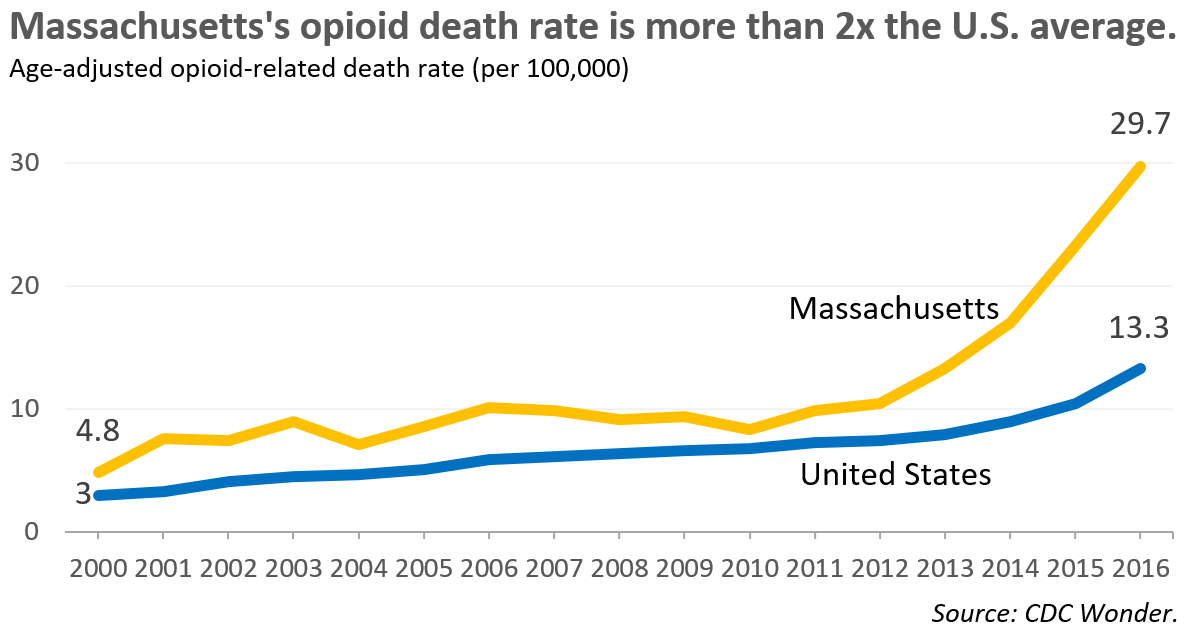Opioids have exploded in Massachusetts. We have to do something.
As lawmakers work to move legislation, Boston Indicators data show there is no time to lose.
By Nineequa Blanding, Director, Health and Wellness, and Luc Schuster, Director, Boston Indicators
With legislation to strengthen the state’s opioid treatment capacity awaiting action from the Massachusetts State Senate, Boston Indicators today unveiled a new data snapshot that captures some the true extent of the opioid problem in Massachusetts.
It’s summed up in the title: Opioid Addiction Is a National Crisis. And It’s Twice as Bad in Massachusetts.
The opioid-related death rate in Massachusetts is among the highest in the nation and more than double the national average, and after accelerating among whites earlier in the decade, it’s now jumping among Hispanic and black residents, too.
The main culprit appears to be fentanyl, the synthetic opioid that is 50-100x as strong as heroin. The data analyzed by the Indicators team finds the number of fentanyl-related deaths in the state has risen fifteen-fold since 2013. In 2017, more than three-quarters of the nearly 2,000 people whose deaths were opioid-related were fentanyl-related.
While the extent of the Massachusetts opioid problem is easy to see, the cause is harder to pinpoint. Massachusetts’ opioid problem is growing even as the economy improves and unemployment falls in the Gateway Cities. It’s a problem even though Massachusetts now has one of the lowest opioid prescription rates in the nation.
There’s more to see in the full snapshot on bostonindicators.org, but one thing is clear. Doing nothing is not an option. Defining the right mix of control and treatment is a challenge, but the data show that tabling opioid legislation and leaving the opioid crisis in Massachusetts unchecked for another year will likely allow the acceleration of the state’s death rates.
Key report findings:
- Fentanyl has become more common in Massachusetts, especially illicit fentanyl.
- There is likely a regional effect at play, with most New England states all having high opioid-related death rates.
- Key Northeast drug trafficking routes run through Massachusetts.
- Economic hardship is related to opioid use, but it doesn’t explain the recent increase.
- Doctor-prescribed opioids play a key role, but they don’t explain why Massachusetts has an opioid-related death rate twice the national average.
- Heroin also plays a key role, but not to a degree that is significantly different from other states.

